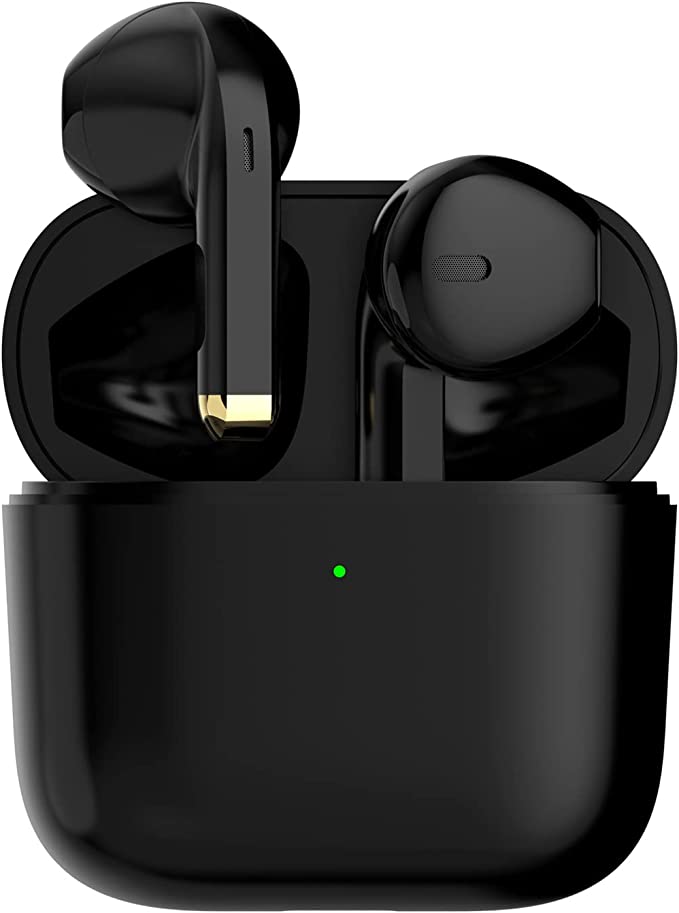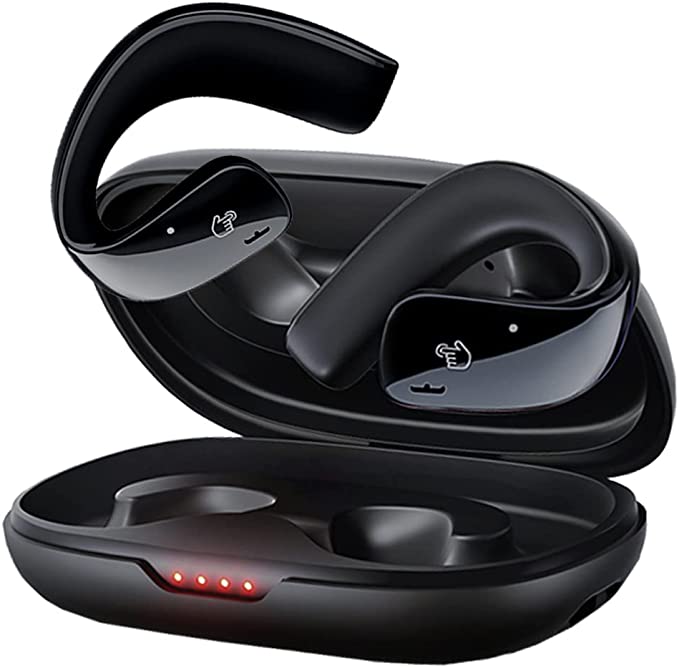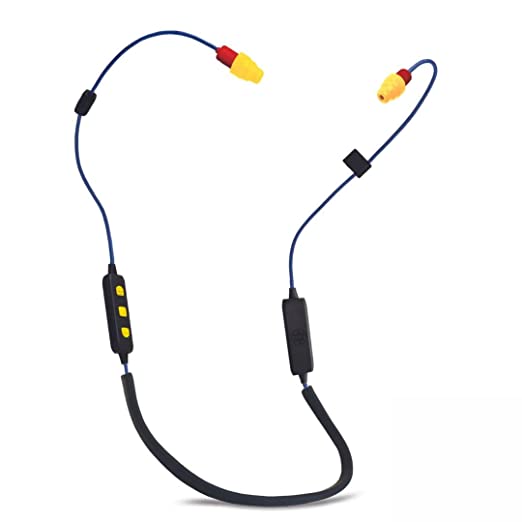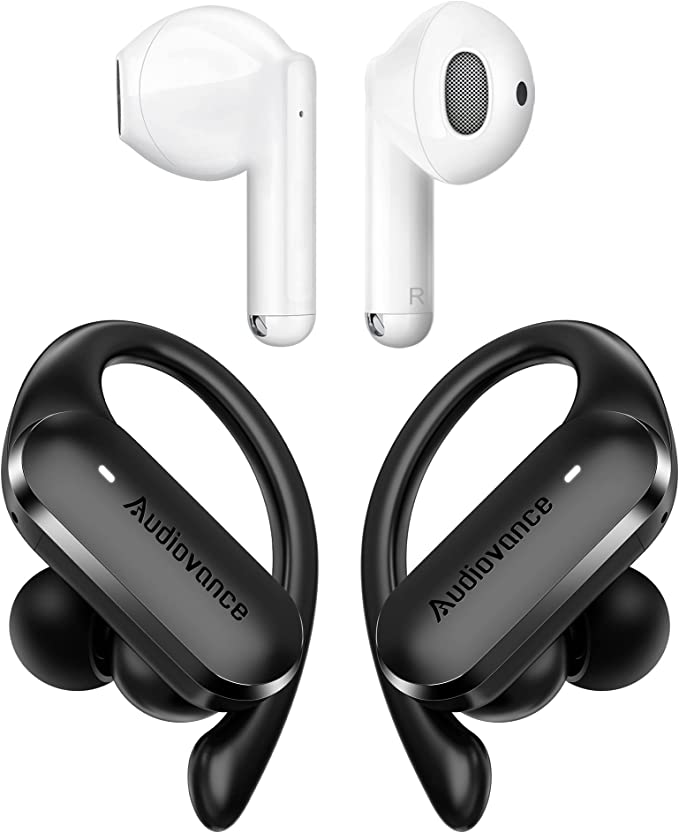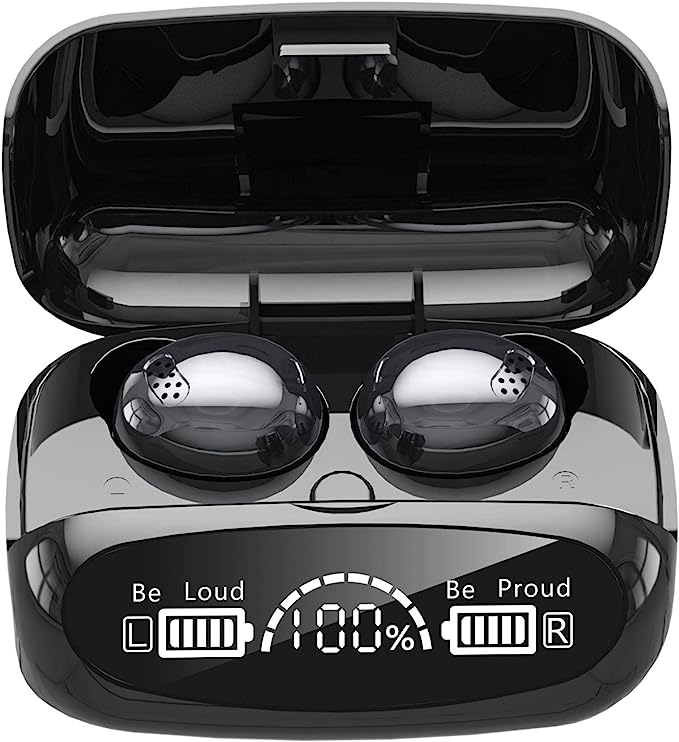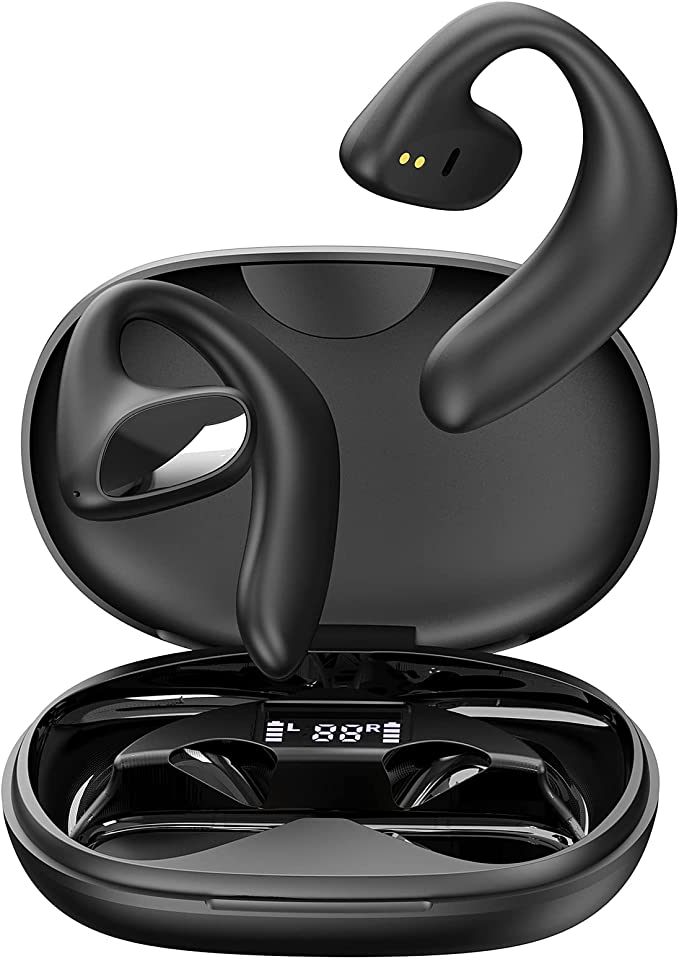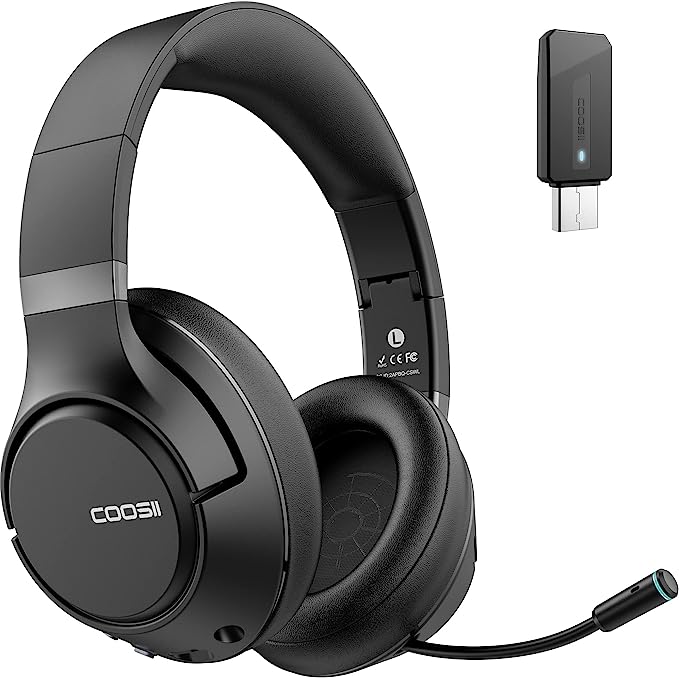Dnniakm Z7 Open Ear Headphones: Experience Comfort and Awareness with Bluetooth 5.3
Update on March 21, 2025, 11:10 a.m.
For decades, we’ve lived in a world dominated by two primary headphone types: in-ear and over-ear. In-ear earbuds, compact and portable, burrow into your ear canal, creating a seal that isolates you from the outside world. Over-ear headphones, larger and often more powerful, cup your entire ear, offering a similar level of isolation. While both offer immersive audio experiences, they come with a set of trade-offs that are increasingly becoming a concern for users.
One of the most significant drawbacks is the potential for hearing damage. Pumping sound directly into your ear canal, especially at high volumes, can, over time, damage the delicate hair cells responsible for hearing. This risk is particularly pronounced with in-ear earbuds, which sit closer to the eardrum.
Beyond hearing health, there’s the issue of situational awareness. When you’re completely cut off from the sounds around you, you lose a vital connection to your environment. This can be inconvenient in an office setting, where you might miss a colleague trying to get your attention, or downright dangerous when exercising outdoors, where you need to be aware of traffic, cyclists, and other potential hazards.
Finally, there’s the comfort factor. Many people find in-ear earbuds uncomfortable for extended wear, experiencing pressure, soreness, or even ear infections. Over-ear headphones, while often more comfortable, can be bulky and hot, especially during physical activity.

Enter Open-Ear: A New Way to Listen
Open-ear headphones represent a paradigm shift in audio technology, offering a solution to the inherent drawbacks of traditional headphones. Instead of blocking or covering your ears, they leave your ear canal completely open, allowing you to hear both your audio and the world around you simultaneously. This seemingly simple change has profound implications for comfort, safety, and overall listening experience.
Air Conduction vs. Bone Conduction: Understanding the Difference
It’s crucial to distinguish between open-ear headphones and bone conduction headphones, as they are often confused. While both leave your ear canal open, they utilize fundamentally different methods of sound transmission. Bone conduction headphones, as the name suggests, transmit sound vibrations through the bones of your skull directly to your inner ear, bypassing the eardrum.
Open-ear headphones, on the other hand, rely on air conduction, the same way we naturally hear most sounds. They use miniature speakers positioned near your ear to direct sound waves towards your ear canal, without physically blocking it. This approach offers a more natural sound profile, often perceived as more spacious and less “in your head” than bone conduction. The Dnniakm Z7 utilizes air conduction technology.

The Science of Sound: A Quick Primer
To fully appreciate the ingenuity of open-ear headphones, it’s helpful to understand some basic principles of acoustics. Sound is essentially a vibration that travels through a medium, such as air, water, or solids. These vibrations create waves of pressure that propagate outward from the source.
When these sound waves reach our ears, they enter the ear canal and cause the eardrum to vibrate. These vibrations are then transmitted through tiny bones in the middle ear to the cochlea, a fluid-filled structure in the inner ear. Within the cochlea, thousands of tiny hair cells convert these vibrations into electrical signals that are sent to the brain, where they are interpreted as sound.
Open-ear headphones leverage this natural process of air conduction. By precisely positioning the speakers and carefully shaping the sound waves, they deliver audio directly to your ear canal without obstructing it, allowing ambient sounds to reach your eardrum alongside your chosen audio.
Dnniakm Z7: Features and Technologies
The Dnniakm Z7 Open Ear Wireless Headphones are a prime example of how open-ear technology can be implemented in a practical and user-friendly design. Let’s explore its key features:

Unpacking ENC: Clearer Calls in a Noisy World
The Dnniakm Z7 features Environmental Noise Cancellation (ENC) technology, but it’s important to understand that this is not the same as Active Noise Cancellation (ANC) found in some high-end in-ear or over-ear headphones. ANC actively blocks external sounds, creating a cone of silence. ENC, on the other hand, focuses on improving the clarity of your voice during calls, even in noisy environments.
The Z7 achieves this through a combination of four built-in microphones and sophisticated Digital Signal Processing (DSP) algorithms. The microphones work as an array, capturing sound from multiple directions. The DSP algorithms then analyze these signals, differentiating between your voice and background noise. By suppressing the unwanted noise, the ENC technology ensures that your voice is transmitted clearly to the person on the other end of the call, even if you’re on a busy street or in a crowded cafe. It’s like having a virtual boom mic that follows your voice, filtering out distractions.
Bluetooth 5.3: The Engine for Seamless Audio
The Dnniakm Z7 utilizes Bluetooth 5.3, the latest iteration of this ubiquitous wireless technology. Bluetooth 5.3 offers several significant improvements over its predecessors, all of which contribute to a better listening experience.
- Enhanced Connection Stability: Bluetooth 5.3 incorporates new features that improve the reliability of the connection between your headphones and your device. This means fewer dropouts and interruptions, especially in environments with a lot of wireless interference.
- Lower Latency: Latency refers to the delay between when an audio signal is sent and when you hear it. Bluetooth 5.3 significantly reduces latency, which is particularly crucial for video calls, gaming, and watching videos, where audio synchronization is essential.
- Improved Power Efficiency: Bluetooth 5.3 is designed to consume less power, extending the battery life of your headphones. The Dnniakm Z7’s 6-hour playtime (at 60% volume) is a testament to this improved efficiency. The quick charge feature, providing 1.5 hours of listening from just a 10-minute charge, is also a significant benefit.
- LE Audio: While not explicitly stated for the Dnniakm Z7, Bluetooth 5.3 includes support for LE Audio, a new standard that promises improved audio quality and new features like Auracast broadcast audio (allowing multiple users to connect to the same audio source). Future firmware updates could potentially enable LE Audio features on the Z7.

Design and Comfort: The Dnniakm Z7 Experience
The Dnniakm Z7’s design prioritizes both comfort and security. The lightweight earhooks, made of silicone, gently wrap around your ears, distributing the weight evenly and minimizing pressure points. This design ensures a snug and stable fit, even during vigorous activities like running or cycling. The on-ear form factor, as opposed to in-ear, eliminates the discomfort many people experience with earbuds that press into the ear canal. The IP55 rating provides crucial protection. An IP55 rating means the device is protected from limited dust ingress and low-pressure water jets from any direction.

Real-World Applications: Where Open-Ear Shines
The unique benefits of open-ear headphones make them ideal for a variety of situations:
- Outdoor Activities: Runners, cyclists, and hikers can enjoy their music or podcasts while remaining aware of traffic, other people, and potential hazards.
- Office Environments: Workers can listen to music or take calls without being completely isolated from their colleagues, fostering collaboration and communication.
- Commuting: Travelers can enjoy audio content on public transportation while still being aware of announcements and their surroundings.
- Parenting: Parents can listen to music or podcasts while still being able to hear their children.
- Everyday Use: Anyone who wants to enjoy audio content without sacrificing situational awareness will appreciate the benefits of open-ear headphones.
The Limitations of Open-Ear: Addressing the Concerns
While open-ear headphones offer numerous advantages, it’s important to acknowledge their limitations:
-
Sound Leakage: Because your ear canal is open, some sound will inevitably escape and be audible to people nearby, especially at higher volumes. This is a trade-off for the situational awareness that open-ear headphones provide. In quiet environments, it’s important to be mindful of the volume level to avoid disturbing others.
-
Bass Response: Compared to in-ear or over-ear headphones that create a tight seal, open-ear headphones generally have a weaker bass response. This is because the low-frequency sound waves, which are responsible for the bass, tend to diffract more and are less effectively directed into the ear canal. While the Dnniakm Z7’s 15.11mm drivers likely provide a decent bass response for open-ear headphones, audiophiles seeking deep, thumping bass may find them lacking compared to sealed designs.
-
Noisy Environments: While the ENC technology helps with call clarity, open-ear headphones are not ideal for very noisy environments where you need complete isolation. If you’re on a construction site or a busy airplane, in-ear headphones with Active Noise Cancellation (ANC) would be a better choice. Open-ear headphones are about balancing your audio with your surroundings, not eliminating the outside world entirely.
-
Privacy. Because of sound leakage, those around you will likely be able to hear what you’re listening to.

The Future is Open: Trends in Open-Ear Technology
The open-ear headphone market is still relatively young, but it’s rapidly evolving. We can expect to see several key trends in the coming years:
-
Improved Sound Quality: Manufacturers are continually working on refining the acoustic design of open-ear headphones to improve sound quality, particularly in the bass frequencies. This may involve using new materials, more sophisticated speaker designs, and advanced digital signal processing techniques.
-
Enhanced Noise Cancellation: While open-ear headphones will likely never offer the complete isolation of ANC, we can expect to see improvements in ENC technology, making calls even clearer in noisy environments. This might involve using more advanced microphone arrays and more sophisticated algorithms.
-
Smaller and Lighter Designs: As technology advances, we can expect open-ear headphones to become even smaller and lighter, further enhancing comfort and wearability.
-
Integration with Smart Features: We may see open-ear headphones integrated with smart assistants, fitness trackers, and other wearable technologies, creating a more seamless and connected experience.
-
Personalized Audio: Future open-ear headphones may incorporate features that allow users to customize the sound profile to their individual hearing preferences and the specific environment they’re in.
-
Directional Audio Improvements: Further development in directional audio technology will help to minimize sound leakage and create a more private and immersive listening experience.
In conclusion, the Dnniakm Z7 Open Ear Wireless Headphones represent a significant step forward in audio technology, offering a compelling alternative to traditional headphones. They prioritize comfort, safety, and situational awareness, while still delivering a satisfying audio experience. By understanding the underlying principles of open-ear technology, the specific features of the Dnniakm Z7, and the broader trends in the field, consumers can make informed decisions about whether this innovative type of headphone is right for them. The blend of awareness and audio quality makes them a valuable tool for anyone who wants to stay connected to both their digital world and the physical world around them.

